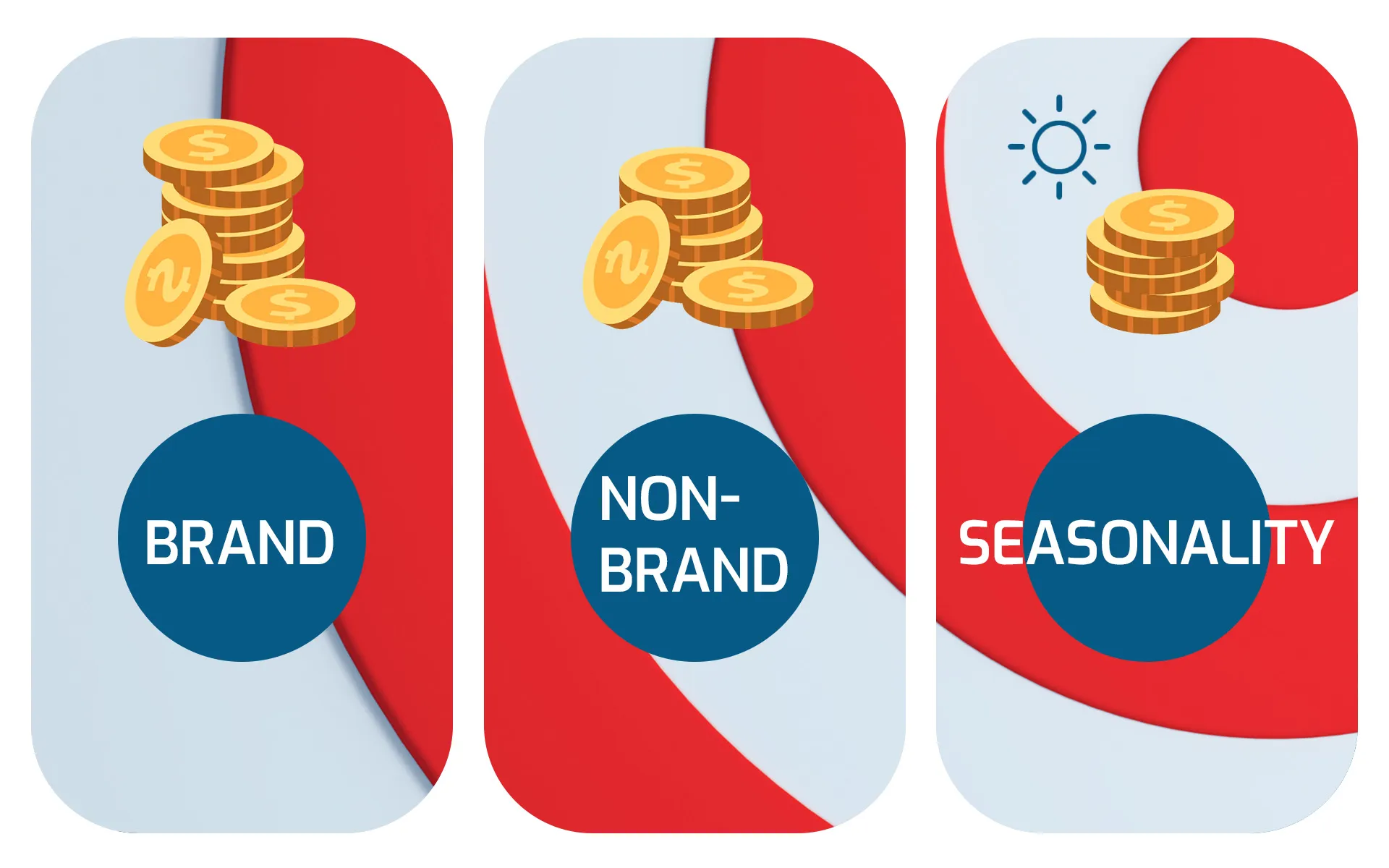read
Identify critical agency failures impacting your budget and growth potential. Move beyond vanity metrics to assess true strategic partnership and ROI.
Is your Pay-Per-Click (PPC) budget actively driving profitable growth, or is it just… there? Maintaining a status quo that might be quietly leaking efficiency? It’s a crucial question because while around 80% of businesses rely on PPC for growth, simply doing PPC isn’t enough. Subpar management, outdated tactics, or a sheer lack of strategic alignment can turn a potent investment into a frustrating money pit.
The digital marketing landscape, particularly in PPC, is shifting under our feet faster than ever. Strategies that worked wonders a few years ago might now be actively harming your campaigns, especially with the rise of AI (over 80% of Google advertisers use automated bidding) and the increasing importance of first-party data. It's no wonder >nearly half (49%) of specialists find PPC harder now than two years prior. Many agencies deliver baseline results – enough clicks and impressions to look busy – but fail to provide the strategic partnership that actually grows your bottom line. Complacency here isn’t just stagnation; it’s actively costing you money and opportunity.
Recognizing these challenges is the first step; partnering with an agency committed to transparency and real results, like Optimum Click, is often the next crucial move for sustained growth.
This isn't about pointing fingers or demanding the impossible. It's about equipping you, the business owner or decision-maker, to look beyond the surface-level reports and diagnose whether your agency relationship is a genuine strategic asset or a liability hiding in plain sight. We'll cover the critical red flags that matter in 2025, moving beyond the obvious blunders to the more subtle, yet potentially more damaging, signs of mediocrity.
Here’s what we’ll dissect:
Who really owns your data and why settling on this is non-negotiable.
Decoding reports: separating the smoke and mirrors of vanity metrics from bottom-line impact.
Strategic disconnects: spotting outdated tactics and goals that don't match yours.
Communication breakdowns that often signal deeper, more worrying issues.
Budget leaks and targeting flaws quietly draining your ROI.
Let's examine the foundational issue that often hides in plain sight, sometimes buried in the fine print of your contract...
PPC Agency Red Flags: What to Watch For in 2025
Your Data, Your Future: The Transparency & Control Imperative
Lack of control over your own advertising accounts and the data within isn't just an operational headache; it's a fundamental business risk. It hamstrings your agility, limits your future options, and can leave you scrambling if you ever decide to switch agencies. If your agency isn't transparent here, you need to ask why, loudly.
Why Full Admin Access is Non-Negotiable
This is simple: it's your business, your money paying for the ads, so it should be unequivocally your account. [The "golden rule," as stated by industry experts, is client ownership of the ad account]. Anything less means you're operating on faith. Without full administrative access, you cannot independently verify spend, check campaign settings, or easily get a second opinion if performance feels off. Agencies might offer excuses about protecting "proprietary strategies," but often it's more about maintaining control. Furthermore, if issues like account suspensions arise – and they do, Google suspended over 12.7 million advertiser accounts in 2023 alone – being locked out severely hampers your ability to understand or resolve the problem. Don't accept excuses; demand the keys to your own kingdom.
The Strategic Cost of Losing Historical Data
Think of your ad account's history – the performance data, keyword performance, audience insights, conversion tracking setup, algorithm learnings – as a valuable business asset. If an agency sets up campaigns under its own credentials, it likely owns that asset by default, unless your contract explicitly states otherwise. Should you part ways, you risk losing all that historical data. This isn't just inconvenient; it forces your next agency (and the platform algorithms) to start from square one, effectively erasing years of learning and investment. It creates high switching costs and a form of vendor lock-in, potentially trapping you with an underperformer because the pain of leaving seems too high. Ensure your contract guarantees you own the accounts and all associated data from day one.
Using Access to Verify Spend and Priorities
Full access isn't just about ownership; it's about verification. Without direct access, you cannot independently cross-reference agency reports against the actual platform data. Are they spending 80% of your budget on easy branded keyword wins while neglecting the harder task of finding new customers? Are campaigns paused correctly when budgets are hit? You simply can't know for sure without looking under the hood yourself. Best practice strongly advocates for clients paying ad platforms directly for the ad spend, with agency fees billed separately, ensuring complete financial clarity and control.
Measuring What Matters: Escaping the Vanity Metric Trap
Agency reports can be masterful works of art… or obfuscation. It’s easy to be swayed by impressive-looking numbers, but if those numbers don't translate directly to your business goals and profitability, they're just noise – vanity metrics designed to distract from what truly matters.
Understanding Vanity Metrics vs. Business Outcomes
Clicks, impressions, even Click-Through Rate (CTR) – these are indicators of activity, not necessarily success. An ad can get thousands of clicks but generate zero qualified leads or sales. What matters are the metrics reflecting bottom-line impact: actual Conversions (leads, sales, sign-ups), Cost Per Acquisition (CPA), true Return on Ad Spend (ROAS) that accounts for profit margins, Customer Lifetime Value (LTV), and the holistic Marketing Efficiency Ratio (MER). If your agency consistently leads reports with clicks and impressions while burying or ignoring conversion and profitability data, consider it a bright red flag.
The Danger of Poor Data Segmentation
This is a big one. Lumping all your results together is like trying to understand your company's finances by looking only at the total revenue figure, ignoring expenses and profit margins by department. Performance varies wildly between users searching for your brand name (Brand) versus those searching for generic terms (Non-Brand). Brand keywords inherently perform better – higher CTRs, lower CPCs, much higher conversion rates. One retail benchmark found average branded ROAS was double that of non-brand ROAS. Mixing them makes your overall results look better, potentially masking significant inefficiency in your non-brand campaigns (where new customer acquisition often happens) and leading to poor budget decisions. Furthermore, feeding unsegmented data into today’s sophisticated AI bidding systems confuses the algorithms, hindering their ability to optimize effectively. Insist on segmented reporting – Brand vs. Non-Brand is the absolute minimum. Segmentation by funnel stage (awareness vs. consideration vs. conversion) and audience temperature (cold vs. warm/retargeting) is also crucial for accurate insights.
Demanding Context, Not Just Data Dumps
Receiving a report full of numbers without any explanation or analysis is, frankly, lazy reporting. Simply presenting raw data without context or actionable takeaways is a major reporting pitfall. What did the agency do last month? What campaigns or tests succeeded or failed? What was learned? What's the plan for next month based on these results? Good reporting tells a story and guides decisions. Bad reporting is just a data dump, potentially designed to obscure rather than illuminate.

Strategic Alignment or Tactical Tinkering? Assessing Your Agency's Approach
A truly valuable agency acts as a strategic partner, aligning their efforts directly with your core business objectives. They adapt to the evolving landscape, rather than just tinkering with bids or clinging to outdated methods because "that's how we've always done it."
Is Your Agency Aligned With Your Business Goals?
If your primary goal is acquiring new customers at a specific profitable CPA, but your agency is optimizing campaigns for maximum clicks or impressions, there's a fundamental disconnect. This leads to wasted budget and effort on activities that don't impact core business outcomes. Furthermore, applying bottom-funnel KPIs like ROAS to top-of-funnel awareness campaigns is a common error that misjudges the value of building initial visibility. Ensure your agency understands your business goals, not just platform metrics, and tailors their strategy and reporting accordingly.
Are They Using Modern Strategies or Outdated Tactics?
The PPC world has moved on, largely thanks to AI and automation. With over 80% of Google advertisers using automated bidding, strategies need to work with the machines, not against them. Yet, some agencies cling to old habits. Rigidly adhering to Single Keyword Ad Groups (SKAGs) in all situations, for instance, can sometimes fragment data too much, potentially starving the algorithms of the conversion volume needed to learn and optimize effectively. Similarly, excessive manual bidding where smart bidding could leverage real-time signals more effectively, or having dozens of tiny campaigns each fighting for scraps of budget, can hinder performance compared to more modern approaches designed for AI. Question tactics that seem overly complex or manual without a clear justification tied to better results, not just more billable hours.
Do They Practice Holistic Optimization (Beyond Just Bids)?
You can have the best-run PPC campaigns in the world, but if they send traffic to a landing page that confuses visitors or takes forever to load, you're burning money. Success requires looking beyond just the ad account settings. Does your agency talk about Landing Page Optimization (LPO) and Conversion Rate Optimization (CRO)? Shockingly, less than 20% of marketers reportedly use landing page A/B tests. Are they providing feedback on ad creative and testing new approaches? For e-commerce, is the product feed optimized, or is it riddled with issues (a major challenge for nearly half of e-commerce marketers)?. A siloed agency that only tweaks bids and keywords without considering the entire user journey – landing page, creative, user experience – is leaving significant performance gains on the table.
How to Spot Passive "Set-and-Forget" Management
PPC isn't a crockpot; you can't just set it and forget it. Even with automation, campaigns require ongoing monitoring, analysis, and strategic adjustments. Is your agency actively testing new ad copy, audiences, or bidding strategies? Are they adapting to market changes or competitor actions? Or does it feel like the campaigns are on autopilot after the initial setup? A passive management style misses optimization opportunities and allows budget waste. Check the Change History in your account (if you have access!) – is there evidence of thoughtful adjustments, or just minor tweaks (or worse, nothing at all)?
The Communication Gap: When Silence Signals Trouble
Poor communication from your agency isn't just annoying; it's often a symptom of deeper problems. It can signal disorganization, lack of proactivity, poor results they're hesitant to share, or simply that your business isn't a priority. And it's a major driver of client dissatisfaction and churn.
Evaluating Agency Responsiveness and Reliability
You shouldn't have to chase your agency for updates or answers. While complex issues take time to resolve, you should expect timely acknowledgements (e.g., responding to emails within one business day is a reasonable benchmark) and clear timelines. Reporting should arrive consistently, on a predefined schedule (weekly, bi-weekly, monthly), following a familiar structure. Erratic reporting suggests internal chaos.
Why Proactivity is a Key Value Indicator

Does your agency bring you ideas? Do they alert you to new platform features relevant to your business? Do they suggest A/B tests or new strategic directions based on performance data? Or do they only react when you ask a question? A purely reactive agency feels transactional and often misses opportunities, reducing their perceived value and increasing the likelihood you'll eventually look elsewhere.
The Importance of Clarity, Consistency, and Clear Contacts
Communication should be clear and straightforward, avoiding excessive jargon. Reports, as mentioned, should be consistent. Ideally, you should have a primary, knowledgeable point of contact rather than being bounced between multiple people to get things done.
How Communication Failures Link to Performance and Churn
Persistent silence or vague updates can sometimes mean the agency simply doesn't have good news or fresh ideas to share. Why does this matter? Because client retention is key for agencies (improving it by just 5% can boost profits by 25-95%), and poor communication is strongly linked to client churn. Unmet expectations, often stemming from poor initial communication, affect over 7 out of 10 marketers, and with half of agencies reporting average client lifespans under two years, communication failures are clearly rampant. Don't underestimate the importance of open, proactive dialogue.
Budget Guardrails: Protecting Your Investment from Waste & Miscues
Ultimately, PPC is about generating a return on your investment. Inefficient budget allocation, lack of control, and poor targeting are direct routes to burning cash and achieving disappointing results. These aren't minor slip-ups; they hit your bottom line directly.
Ensuring Efficient Budget Allocation (Brand vs. Non-Brand, Seasonality)

Where is your money actually going? As discussed, over-reliance on branded keywords might produce a great-looking ROAS but fail to attract new customers if that's your goal. Branded traffic cost share can range from 16% to 56%, so ensure the split aligns with your objectives. Furthermore, agencies must manage budgets effectively, adjusting for seasonality or pausing campaigns appropriately, not just spending the same amount month after month regardless of market conditions. And pure waste? [One analysis found companies wasting an average of 15% of their PPC budget on irrelevant keywords alone] – money that could be driving real results. (Self-correction: Removed the link to Seer Interactive for the 15% stat as it's a competitor agency and the stat is widely understood enough to stand alone or be attributed generally if needed).
Maintaining Budget Adherence and Financial Control
This should be obvious, but agencies must stick to the agreed-upon budget. Exceeding budgets without prior authorization is a major breach of trust. As mentioned earlier, having the client pay ad platforms like Google and Meta directly, with a separate management fee for the agency, is the cleanest setup for transparency and control.
The High Cost of Imprecise Audience Targeting
Showing your ads to the wrong people is like shouting into the void – expensive and ineffective. Ineffective targeting (wrong keywords, audience demographics/interests, incorrect geographic locations) is a fundamental cause of poor performance, leading directly to low CTRs, low conversion rates, high CPAs, and ultimately, a poor ROI. This often stems from insufficient research into your market or simply a lack of ongoing analysis and refinement by the agency. Ensure your agency demonstrates a deep understanding of who your ideal customer is and how to reach them effectively online.
Conclusion: Demand More Than Mediocrity – Drive Strategic Growth
Investing in PPC shouldn't feel like rolling the dice. While the landscape is complex, the fundamentals of a good agency partnership remain clear: transparency, strategic alignment, clear communication, measurable results tied to your business goals, and careful stewardship of your budget.
Don't settle for an agency that just manages spend, ticks boxes, or hides behind vanity metrics. Demand a partner that understands your business, challenges assumptions, brings proactive ideas, and is laser-focused on driving profitable growth. Recognizing the red flags we've discussed is the crucial first step toward ensuring your PPC investment is genuinely working for you, not just costing you. An informed, engaged client is the best defense against mediocrity.
Is your PPC investment truly maximizing its potential? If these red flags resonate, perhaps it's time for a change. Contact Optimum Click today for a strategic account assessment.


![AI Advertising in 2025: Real ROI vs Expensive Hype [Guide]](/_ipx/f_webp/img/blog/blog-ai-in-the-advertising-space.jpg)
